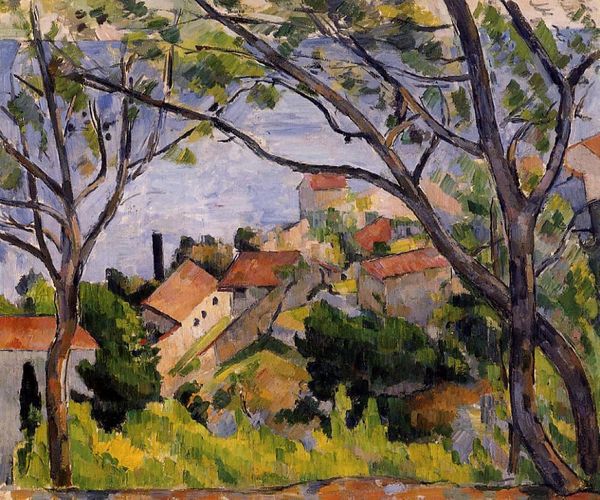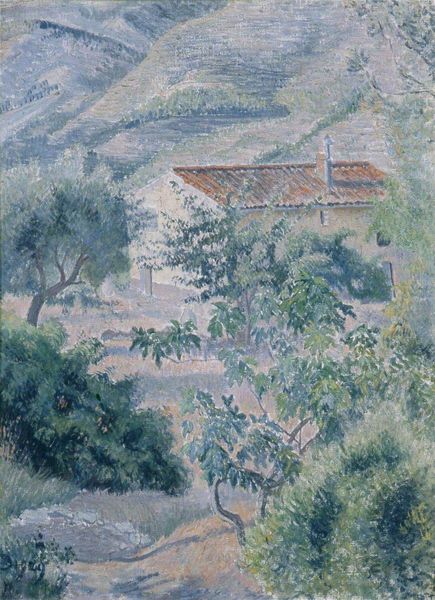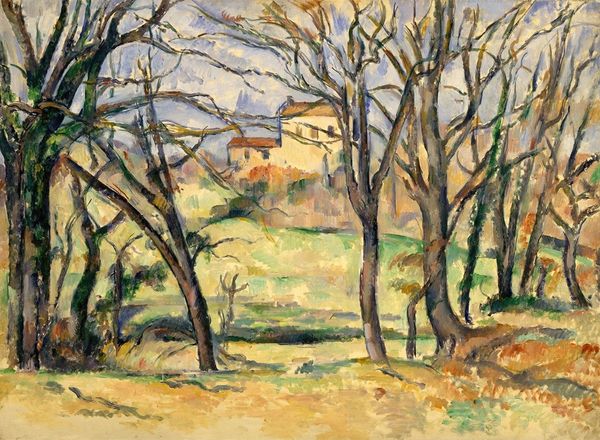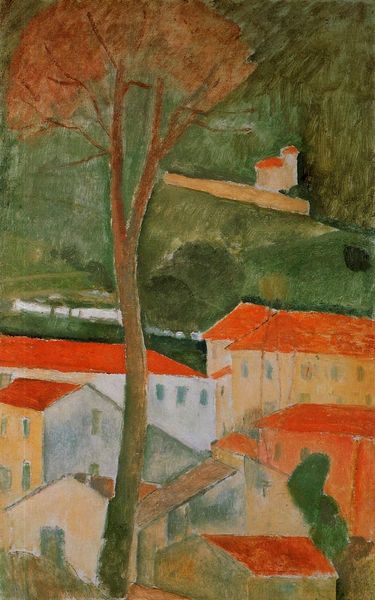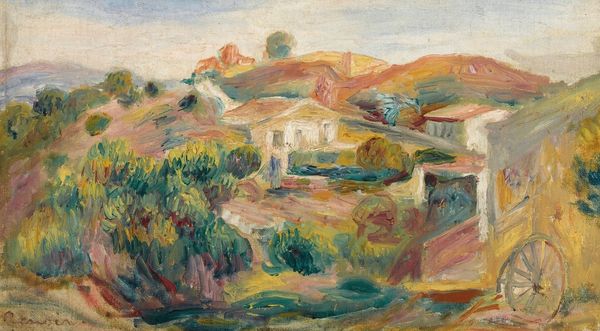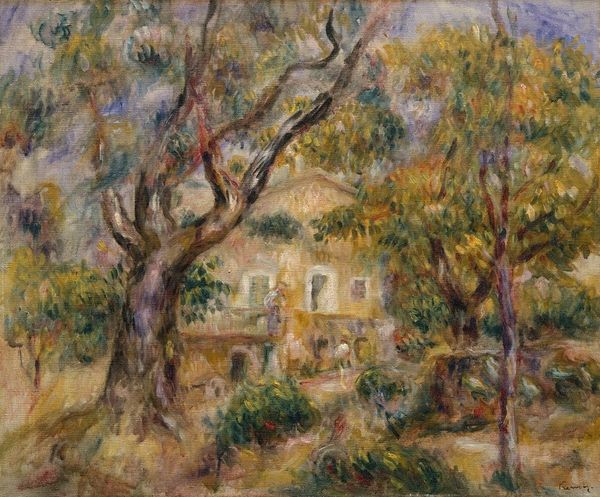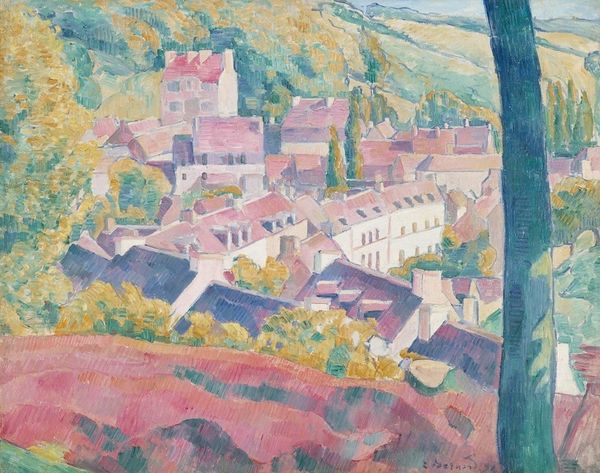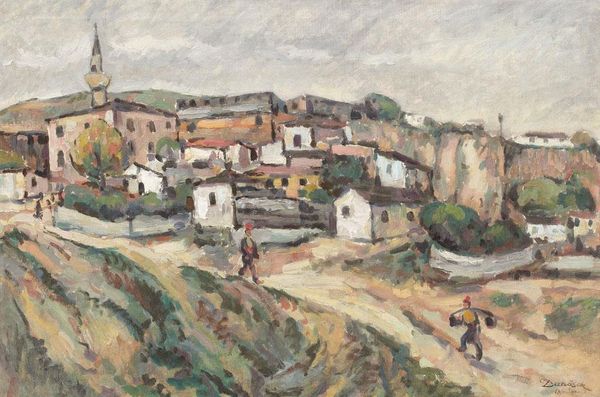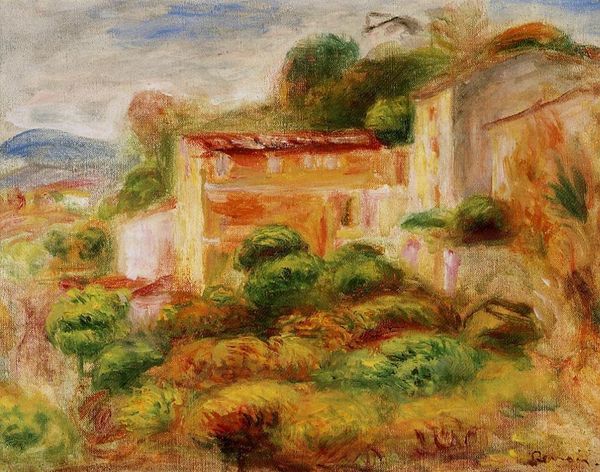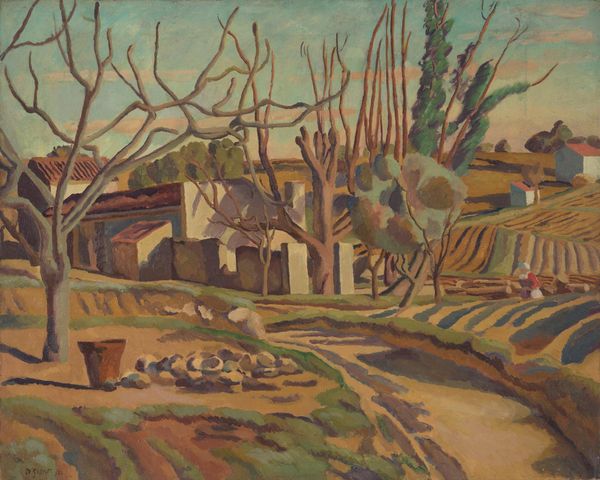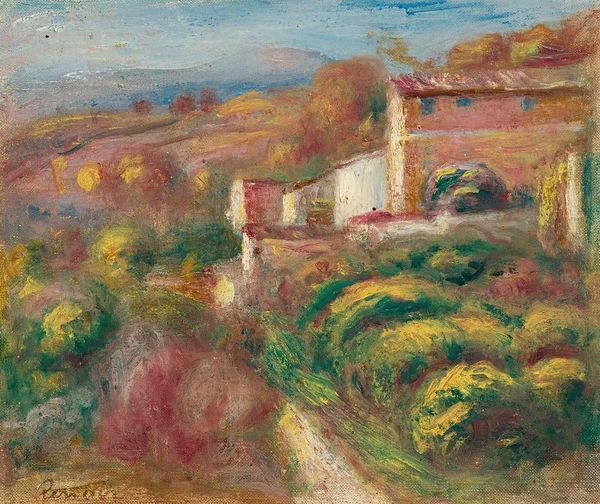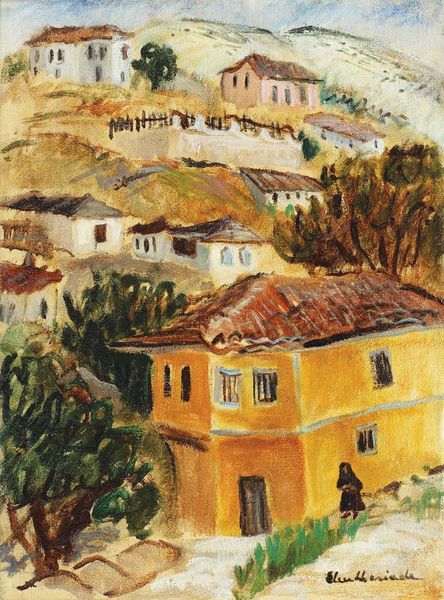
plein-air, oil-paint
#
impressionism
#
plein-air
#
oil-paint
#
landscape
#
impressionist landscape
#
oil painting
#
cityscape
#
post-impressionism
Copyright: Public Domain: Artvee
Editor: This is Paul Cézanne's "Morning View of L’Estaque Against the Sunlight", an oil painting that might have been created en plein air. It is kind of hazy, with muted colours, almost like a memory. What do you see in this piece, beyond just a landscape? Curator: I see more than just a landscape; I see a dialogue about power and perspective. L’Estaque, as a working-class port, faced significant social and economic inequalities. How does Cézanne, an artist from a privileged background, position himself in relation to this community? Does the "morning view" offer a romanticised, distanced observation, or does it hint at a deeper engagement with the realities of its inhabitants? Editor: That’s a great point, the viewpoint is definitely from a distance. The rooftops and foliage seem to almost blend into each other. I hadn't really considered that the scene has a socioeconomic context. Curator: Consider the implications of 'sunlight'. In a way, it is used to sanitise and soften the harshness of working class lives. Post-Impressionism's departure from academic constraints allowed for novel representations; here, it makes you consider whose stories and whose visions were centered, or conversely, erased. Is Cézanne’s painting a study in form or a reflection on social conditions, and can it be both? Editor: I guess that it highlights that we can’t ignore those questions while observing art. This definitely makes me want to research L’Estaque at the time! Curator: Exactly. Engaging with such context helps to view the scene and also to look for potential untold stories about people who were at the center of this location’s history. Editor: Absolutely. Thanks for that insightful perspective. It’s transformed how I see the painting.
Comments
No comments
Be the first to comment and join the conversation on the ultimate creative platform.
